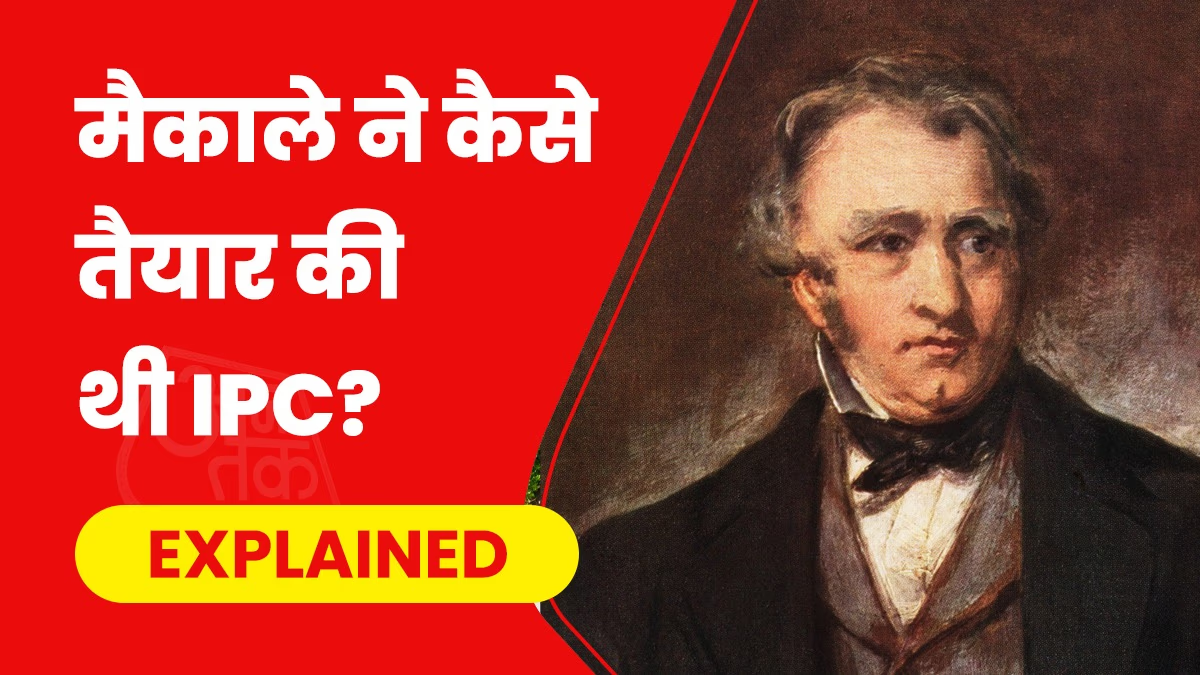The criminal justice system in the country underwent a complete transformation starting July 1, with the introduction of three new laws guiding it.
As of July 1, the Indian Justice Code has supplanted IPC, the Indian Civil Protection Code has taken the place of CRPC, and the Indian Evidence Act has replaced the Indian Evidence Code.
Opposition voices argue there was no necessity for new laws. However, Home Minister Amit Shah claims the older laws focused on 'punishments' while the new ones emphasize 'justice'. When introduced in Parliament last year, Shah asserted these colonial laws were devised by the British to rule over their subjugated subjects.
Until now, our criminal justice system relied on the IPC, formulated 164 years ago. It defined crimes and prescribed punishments. The Indian Justice Code now stands in its place.
Behind the creation of the IPC was the astute mind of the British lawyer Thomas Babington Macaulay. He once limited his experience in law to convicting those stealing chickens. Despite this, his intellect was sharp, having studied law at Cambridge University before venturing into politics. By 1830, at just 30, he was elected to the House of Commons.
When Macaulay Arrived in India
In 1833, a debate at the UK Parliament revolved around the Charter Act, aimed at significantly reforming the East India Company's functioning in India. A provision in this act created the position of a law member in the Governor General's Council.
During discussions on the law, Macaulay recommended that India should have a code or structure characterized by both uniformity and diversity.
A month later, Macaulay wrote to his sister, mentioning his annual salary of 10,000 pounds in India, which allowed luxurious living in Calcutta (now Kolkata) on just 5,000 pounds. He told his sister he intended to return to England by age 39.
The Crafting of the IPC
Macaulay arrived in India in 1834, serving in the Governor General's Council as a legislative member. Through the Charter Act, the Law Commission was formed with Macaulay as its chairman. He began working on the country's criminal laws.
While the Law Commission had five other members, the responsibility of drafting the criminal code primarily rested on Macaulay's shoulders. The code he developed was succinct, often explained with examples — a method still in use today.
Describing theft, he depicts: 'A and Z are good friends. In Z's absence, A enters his library and takes a book. If A believes Z consented to him reading the book, it’s not theft. But if A sells Z’s book for personal gain, it’s considered theft, and thus a crime.'
The first draft of the Indian Penal Code, led by Macaulay, was completed and submitted to the Governor General's Council in 1834. The final draft arrived in 1837, yet further amendments were suggested. The IPC's entire framework was readied by 1850 and presented to the Legislative Council in 1856.

Source: aajtak
The IPC Enacted Post-Macaulay’s Death
Although Macaulay drafted the IPC, it was not implemented during his lifetime. A year after his death in 1859, it was passed in October 1860, coming into effect on January 1, 1862.
The IPC was divided into 23 chapters comprising 511 sections. Certain IPC crimes weren’t limited to India; they were recognized as crimes wherever the British Empire had influence. For instance, unnatural relations became offenses in both India and Britain.
Some experts believed Macaulay wasn't fond of Indian customs, reflected in the IPC. It made the British rule more effective.
Why the IPC is Termed ‘Punitive’
At the onset of British rule in India, many diverse and mostly unwritten laws existed. Therefore, there was a need for a written code applicable to all.
Macaulay was granted considerable freedom in forming the IPC, but its enactment lagged for several years, leaving the IPC in limbo.
However, the 1857 rebellion prompted significant changes. Post-rebellion, East India Company rule ended, and control shifted to the British Crown. This necessitated a law to suppress uprisings against the British.
For instance, the IPC included sedition as a crime. Any individual inciting or attempting to incite dissatisfaction against the East India Company faced lifelong imprisonment or a maximum of three-year jail sentence.
Two additional laws related to the criminal justice system were introduced within two decades of the IPC’s implementation by the British. These were the Indian Evidence Act of 1872 and the CRPC of 1882.




